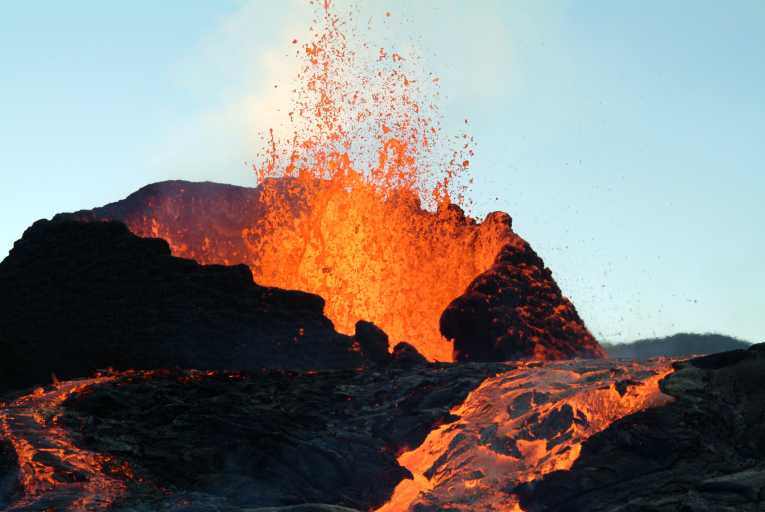Geologists drilling in the Krafla volcano in Iceland struck upon a high grade source of geothermal energy when their deep drilling well hit a pool of molten rock. These magma wells could produce five times the power of conventional wells as the economics of generating steam from hot geothermal sources improve as temperature and pressure increase.
At 2.1 kilometres deep, and only for the second time ever worldwide, the geologist's drill bit made contact with liquid magma at about 1000 degrees C. Water cooling the drill at 10 degrees had an explosive effect when it met the molten lava, causing the formation of a volcanic glass plug.
The scientists retrieved their drill bit and lined the well with telescopic steel casing, the last 100 metres of which is perforated to allow water or steam to flow upwards. The drilling is part of the Iceland Deep Drilling Project (IDDP) a consortium of Icelandic power companies, and is co-sponsored by the US National Science Foundation.Gumundur Omar Friedleifsson is the chief geologist and local coordinator of the project at the HS Orka electricity company in Iceland, 'The beauty of this is that if we can get superheated steam up to the surface, we can do some minor chemical tricks to neutralise the acids and feed it straight into a heat exchanger or turbine,' said Friedleiffsson. The magma generated energy would be much cheaper to produce than normal geothermal energy which relies on rock heated water or steam at much lower temperatures. Conventional geothermal wells produce about 5 MW of energy from 2 kilometres of expensive perforated piping while the 'magma' well could produce 25 MW of power from only 100 metres of holed pipe, enough to heat 30,000 homes.
The project, reported in the March Issue of the Geologist, has generated international interest as shallow bodies of magma should occur worldwide wherever there are young volcanic rocks, like Hawaii, and Indonesia. Wilfrid Elders, a geothermal energy specialist at the University of California Riverside led the research team said, 'In the future these wells could become attractive sources of high-grade energy.'
A third of the electric power and 95 percent of home heating in Iceland is produced from steam and hot water that occurs naturally in volcanic rocks.










